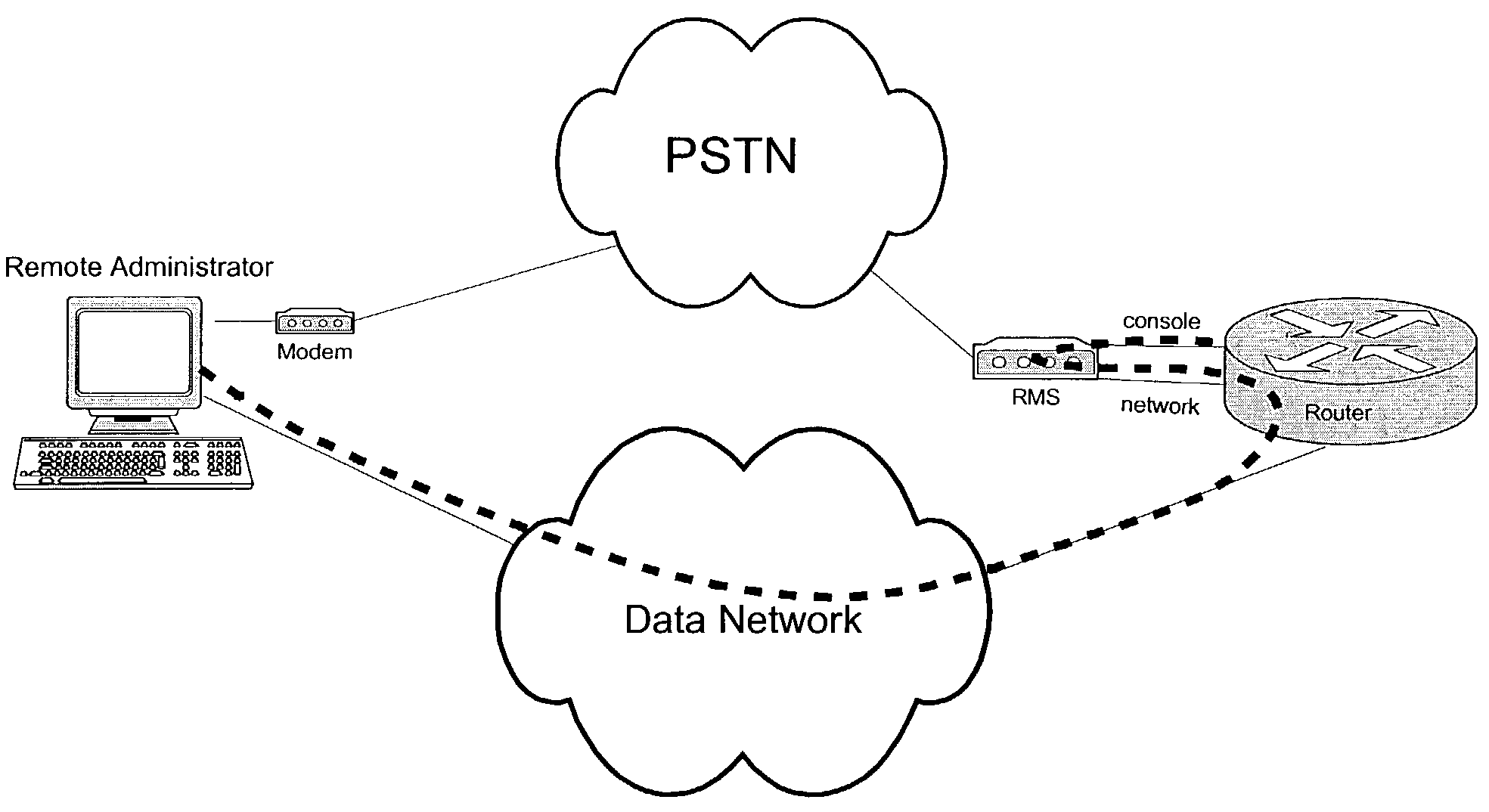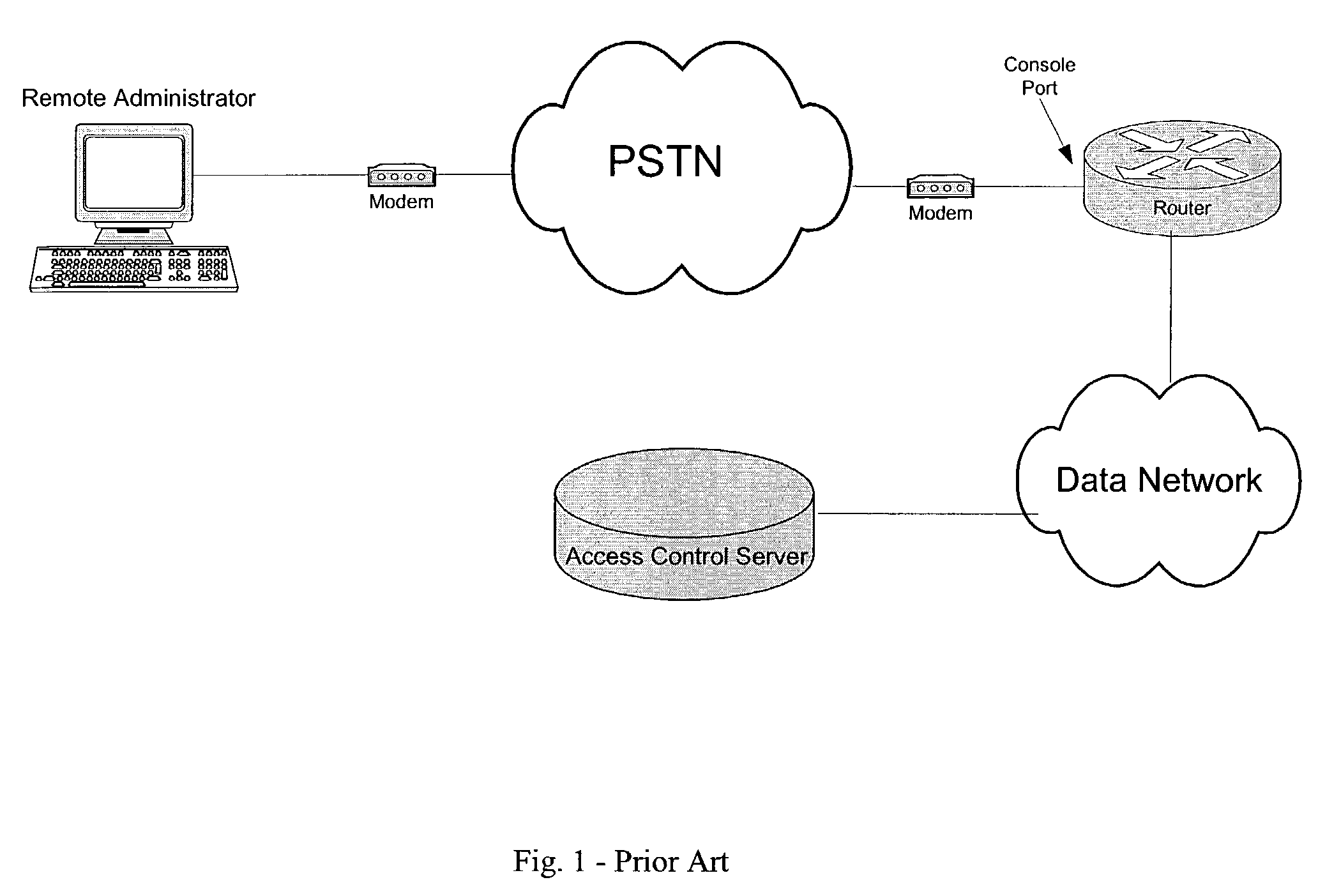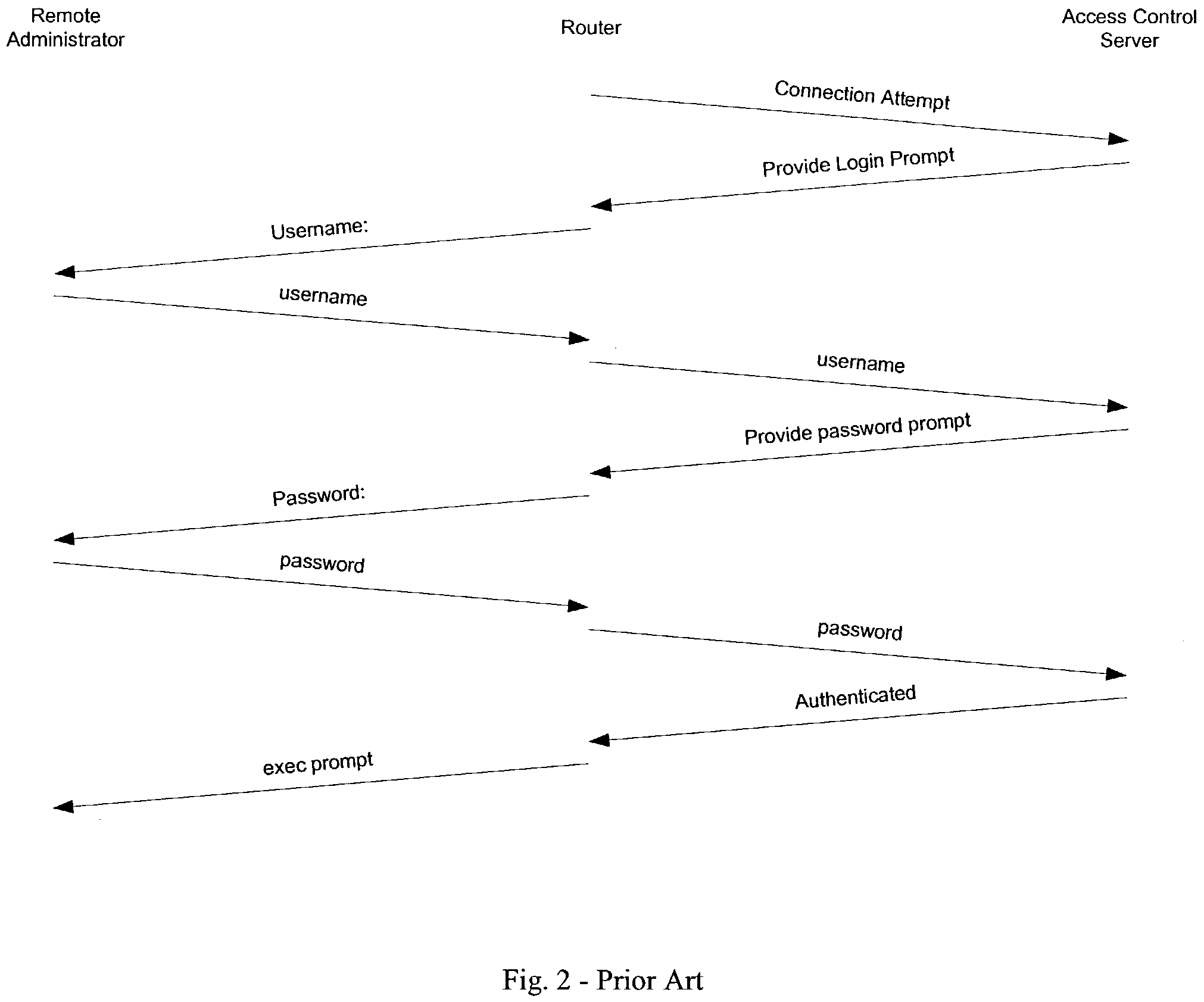Out-of-band remote management station
- Summary
- Abstract
- Description
- Claims
- Application Information
AI Technical Summary
Benefits of technology
Problems solved by technology
Method used
Image
Examples
Embodiment Construction
[0091]The preferred exemplary embodiment of the Remote Management Station (RMS) of the present invention, as illustrated in FIGS. 5 through 7, comprises a management station to assist a remote network administrator in securely managing a networking device such as a router or switch in an environment such as that depicted in FIG. 4. The RMS provides the remote operator with a number of capabilities that will be looked at individually. Having an embedded processor in the RMS facilitates these capabilities. The embedded processor includes all the components necessary for stand-alone operation such random access memory (RAM), read-only memory (ROM), nonvolatile random access memory (NVRAM), and Flash memory. At times when the embedded processor receives signals from the analog block it will forward the signals to the serial port. At other times, as discussed below, the embedded processor will take other actions concerning signals received from the analog port.
[0092]The RMS has one or mo...
PUM
 Login to View More
Login to View More Abstract
Description
Claims
Application Information
 Login to View More
Login to View More - R&D
- Intellectual Property
- Life Sciences
- Materials
- Tech Scout
- Unparalleled Data Quality
- Higher Quality Content
- 60% Fewer Hallucinations
Browse by: Latest US Patents, China's latest patents, Technical Efficacy Thesaurus, Application Domain, Technology Topic, Popular Technical Reports.
© 2025 PatSnap. All rights reserved.Legal|Privacy policy|Modern Slavery Act Transparency Statement|Sitemap|About US| Contact US: help@patsnap.com



